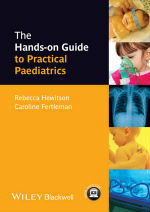
The Hands-on Guide to Practical Paediatrics
Rebecca Hewiston
Caroline Fertleman

Scenarios
Scenario 5: Severe pneumonia
Bethany Wordsworth is 2 years old and has been brought to the emergency department by her mother because she's had a very high fever today and she hasn't been herself. She's been very miserable today and has had a cough and a cold for the past couple of days. She has severe learning difficulties, has difficulty swallowing and is fed via a percutaneous endoscopic gastrostomy (PEG) tube. She has had multiple previous admissions for suspected pneumonia. She has no known allergies.
On examination, you find that she has some mild subcostal recession, her respiratory rate is 45 and oxygen saturations 94% in air. She has some perioral pallor, but her lips and tongue are pink. Her temperature is currently 38.5°C, heart rate is 140 and capillary refill time is less than 2 sec centrally.
Auscultating her chest, she has normal breath sounds on the right and coarse crackles audible at the left base. You suspect that she has a community acquired pneumonia and order a chest X-ray. This shows consolidation in the left lower zone.
Her details are as follows:
Name: Bethany Wordsworth
DOB: 13/11/2011
Hospital Number: 7802356
Weight: 11 kg
-
1. You check the hospital antibiotic guidelines and it recommends intravenous co-amoxiclav for severe community acquired pneumonia. Prescribe this for Bethany.
-
2. The next day when reviewing Bethany on the ward round she has improved. She has been afebrile since admission, is no longer tachypnoeic and has no signs of respiratory distress. Your consultant thinks that she is now well enough to receive oral co–amoxiclav and asks you to amend the drug chart.